- Home
- L. Ron Hubbard
Writers of the Future, Volume 28 Page 7
Writers of the Future, Volume 28 Read online
Page 7
After I explained, he shook his head and sighed. “I knew I should’ve disconnected that damned transponder a long time ago. Not that it matters now. I had my chance and I blew it.”
Jack had come back for me, risking his opportunity to be the first person to see the big find. He wanted a chance to solve the puzzle, to discern the message he perceived in those formations. Helping him still do that was the least I could do in thanks.
“What’s down there?” I said. “In the canyon?”
“I don’t know yet, but Nellie says it’s nearly thirty feet square and the part I’ve uncovered so far is flat, smooth basalt. Those weird shapes you saw are attached to it like sprues to an injection molded part.”
“Like it was molded or formed in place?”
He nodded.
Huge and square, I thought and tried to dampen my new excitement. “Amazing. So you haven’t exposed anything that will melt?”
He laughed, for the first time since learning he was going home. “No, basalt doesn’t melt easily. But there’s something else.”
I waited and could see him smiling through the visor. “Well?”
“There’s a pattern in the face I uncovered. Thirty-five cylindrical pockets arranged in a ring, with one in the center. According to Nellie’s analysis, the translucent material at the bottom of each hole is diamond.”
“What could that mean?”
“I have no idea. I had to stop and come rescue you.”
It was my turn to smile. I held up a finger and called base.
“Sorry for the scare, Courtney,” I said. “But I found Jack. Nellie is working fine, so we have plenty of air and are not in any danger now.”
“Thank God, Malcolm. Meteorology says this storm could last another two or three days. Are you sure you have enough supplies for that long?”
Jack cut in on the conversation, reassuring her we were going to be fine.
“You’re in a heap of trouble, Jack! And I still don’t have a transponder signal for you.”
He opened his mouth, but I cut him off. “Actually, Courtney, I may be losing my transponder signal too. We’re about to go into an area that seems to play hell with most of our communications gear. So don’t worry if you don’t hear from us for a few days.”
“I don’t think—”
“We’ll meet up with the investigation team at the dig site in two or three days, or whenever this storm lets up.”
“But—”
“Malcolm and Jack signing off,” I said and killed the connection.
Jack looked at me and raised an eyebrow. “If you could find that pattern, they can too. Besides, they have enough information to know what direction you were going.”
“Yeah, but we could head north for a few hours and cut off my transponder, then enter the canyon from the north end. That should mess them up for awhile. It may only give us a few days. Probably only until the storm ends. Will that be enough time?”
He shrugged, always a strange gesture in an excursion suit. “Maybe, but if you do this, there is a good chance you’ll be sent home too.”
“I wouldn’t miss this for anything,” I said and started running.
We dug in for the night near the canyon’s north end and awoke to a sickly yellowish-pink dawn. The weak sun struggled to break through the haze, but the storm had abated and the winds died, so the timer was running. If our luck ran out, our fellow explorers could find us within a matter of hours.
Ninety minutes after breaking camp, we stood atop the basalt block. Using Nellie’s vacuum system, we removed the dust accumulated from the storm revealing a smooth polished surface, with the now-familiar pattern of holes in the center of the top surface.
“How odd that they’d make this finely polished cube, yet have these weird, gnarly sprues marring its perfection,” I said.
“It does look to be part of the formation process,” Jack said. “Maybe they just didn’t care about the sprues.”
“Yeah, but why these holes? Why their fascination with this particular pattern?”
He knelt down and aimed his helmet light into the holes. They were the diameter of a golf ball and about a foot deep, and, as he’d earlier reported, their bottoms were glassy and clear. “I don’t know, but I’d sure as hell like to find out.”
“Looks like we need some kind of key,” I said. “And if we had a key, I wonder what it would do?”
Jack stared at the holes, occasionally poking his gloved finger in one. “Maybe we could make a key.”
“You know,” I said, pausing, not sure if I should voice my latest thought. “The other holes are filled with water ice. Maybe . . .”
Jack almost leapt to his feet. “It couldn’t hurt to try!”
Of course, that comment left me feeling more than a little uneasy, but there was no stopping him once he got started. Forty minutes later I dubiously examined Jack’s kludge work. He’d originally wanted to build a manifold of tubes to feed water into each hole evenly, but I had stopped him when I realized he’d have to cannibalize most of Nellie’s internal plumbing to realize the contraption.
We instead covered the pattern with a shallow tent made from extra sheet plastic, precariously sealed to the surrounding surface with our entire stock of suit repair putty. A hole in the center was cinched up tight around a tube attached to Nellie’s tanks. Jack assured me that if we pumped water in fast enough, it would fill the holes and freeze before evaporating. I wasn’t convinced, but we had nothing to lose, except of course most of our water.
“What if we do open the lock? Or activate something? What if we break it?”
Jack looked up at me, his exasperation obvious even through the dusty visor. “Make up your mind, Malcolm. We’re never going to get another shot at this. It’s us—right now—or we forget about it. They are going to be pissed enough to ship us back home and instead of us figuring this out, some Martian Mickey Mouse will build an enchanted castle around it.”
He was right. I had made my decision and sealed my allegiance. “Let’s try it.”
We stood on a pile of excavated dirt at the cube’s edge and pumped the water in under pressure. Wispy vapor curls immediately revealed the gaps in our crude seal. The tent filled and tightened rapidly, to the point we feared it would burst the seal.
“Stop!” I yelled.
Jack killed the flow and the plastic almost immediately started to deflate.
“Crap,” he said. “We’d better look quick.”
Before we could pull the cover off and check our handiwork, a series of reports—loud enough in the weak Martian air to hear through our helmets—made us both step backward. Fissures appeared in the basalt, radiating outward from under the plastic cover in an oddly uniform pattern.
“You were right,” Jack muttered. “We broke it.”
“Maybe not. The lines are all straight and equally spaced, like pie wedges. They don’t look like natural fractures.”
Before I could say another word, he jumped down onto the surface, tested it with a couple of bounces, then dropped to his knees, shining his helmet light into the cracks. He motioned for me to come down.
“The basalt is only about a foot thick,” he said. “And it looks like more diamond under it. Holy crap. Do you think this stuff just covers a big block of diamond?”
“Well, it would sure be durable,” I said and joined him. I removed the cover to look at the pattern. It had nearly disappeared, but I could tell by the fragment arrangement that the cracks had each started at a hole, then run across the top and disappeared down the sides into the dirt.
“Looks like our ice expanded and started the breaks,” I said.
“No way. One or two cracks maybe, to relieve pressure, but not—” He paused and ran a hand along the edge of several sections, then started pulling on them.
“Unless of course,” he gr
unted, “it was designed to break this way.”
The wedge moved nearly an inch. He stood up and looked at me. “I bet if the whole block had been uncovered, this shell would have fallen away. I think it was meant to fall away.”
We used Nellie to dig all morning, but by mid-afternoon had to send her out in search of ice to replenish our air and water supply. So we dug by hand, using our climbing axes. Once we’d totally cleared the second side, Jack slipped his axe blade behind one of the loose basalt sections and started gently rocking it. With an audible pop, the strip collapsed into large chunks that tumbled down on him like stacked blocks pushed over by a petulant child. I heard him grunt and curse over the comm link as he disappeared in a pile of stone and dust.
“Jack!” I ran to him and started moving yard-wide pieces of stone I wouldn’t have been able to lift on Earth.
“Crap,” he muttered as I pulled the last piece off.
“Are you leaking? Are you hurt?”
“No leaks,” he said, but I could hear pain in his voice. “And I’m fine, just help me get up.”
I moved one more slab and couldn’t miss its obvious uniformity. Jack had been right again. The basalt covering had been designed to come apart easily. The shell’s inside face had been serrated in a grid pattern, the squares held together by a thin strip of surface stone that was easily broken once the interconnecting tensions and supporting soil had been removed.
I turned my attention to what lay beneath the shell. It appeared to be a solid block of diamond. I switched on my helmet light and looked inside. Prickles and chills crawled up my back, as I unwittingly uttered the phrase from the old science fiction classic. “My God, it’s full of stars.”
Jack grunted as he brushed off dust and checked his suit and harness equipment for damage. “Stop screwing around. What do you see?”
I opened my mouth, but words wouldn’t come. The interior of the block was filled with what looked like constellations of sparkling stars. It was as if someone had cut a block of the stunning Martian midnight and buried it for us to find.
“Malcolm?” Jack moved up next to me, leaning in to see.
The star-like points in the block only glowed when my light touched them. My scientific mind argued that they could be impurities or microfractures in the diamond block, but part of me knew I was looking at a three-dimensional celestial map.
“A map,” Jack whispered.
My comm link hissed and popped, then Courtney’s voice intruded on our discovery. “Come in, Malcolm, this is Mars Base One.”
I almost succumbed to training and long ingrained habit to answer her, but remained silent. I glanced at Jack, but he was totally focused on the block’s interior.
“Come in, Malcolm. We’ve had fliers all over the area since the storm ended. There are no communication anomalies. We don’t know what you two are doing out there, but the commander is pissed.” She paused for a second, then resumed. “He says Jack is going home no matter what, but considering the amazing find you reported he might consider letting you stay. If you call in now.”
The urge to respond with a long string of obscenity was nearly overwhelming. They were prepared to let me die in the storm, yet were now threatening to punish me? I bit my lip, made sure my frequency setting was set for local and Jack’s channel and told him.
“We’d better hurry. Base just called. I don’t think they know where we are yet, but they are sure looking.”
We started digging faster. When Nellie returned, I focused my efforts on getting video of the map from every exposed angle. By sundown the three of us had cleared two more sides, leaving only the bottom and one side still covered, but the light failed quickly in the canyon.
Base had tried to call me and Jack several more times during the day and at one point we saw a flier high in the east, over the area we’d been heading before killing my transponder.
“We’d better dig in for the night,” Jack said.
“If we’re going to uncover this, we’d better work through the night,” I said. “Now that the wind has died, they’ll eventually see Nellie’s fresh tracks and follow them back here.”
“Yeah, but if we’re lucky they won’t find the tracks until tomorrow, then it will take hours for them to get here by truck or blimp. But if they keep those fliers looking all night, they would see our work lights or even our IR signatures and be here before morning. I think we should get underground.”
I hated to leave the find for that long, but reluctantly agreed. Once out of our suits and settled in our burrow for the night, I linked my suit’s computer to Nellie so that we could both see the video on her foldout display screen. I instructed the computer to build a 3D map based on the footage and overlay the actual video with graphics. We both immediately noticed that among the thousands of points some were three to four times larger than the rest, looking more like embedded pearls than distant stars. Those pearl points were located in pairs, some almost touching and others separated by up to an inch. Each pearl was also connected to another, more distant, pearl by a hair-thin line.
“Weird,” Jack said in an almost whisper. “Those bolos or barbells are some kind of pattern, but . . .”
“Computer, overlay any existing star charts in the database with these patterns.”
“I have only rudimentary navigational aid star charts in my local database,” the computer said in its charming southern belle voice, causing Jack to look at me with a smile and raised eyebrows. “Do you want me to search the base archives or send a download request to Earth?”
“Does Nellie have star charts?” I asked the still grinning Jack.
“Malcolm? You must really . . .”
“Just answer the question.”
He shook his head. “No real need. Go ahead and tap base camp, it’s only a matter of hours until they find us anyway.”
“Check the base first, then send to Earth if they don’t have an all-inclusive chart.”
“I’m loading the 3D star chart from base camp data stores,” the computer said. “Please provide a relative scale for the newly constructed pattern.”
Jack and I looked at the slowly rotating pattern on the screen, then back at each other with shrugs.
“We have no scale. You’ll have to look for relational patterns, then adjust scales accordingly.”
“Understood,” the computer said.
“Inform us if you have any pattern match greater than seventy percent.”
“Understood.”
Radio calls from base camp increased after the computer’s download connection, but we ignored them. Jack started fixing a simple dinner, but I couldn’t stop looking at the pattern. I could see two exceptions to the pearls appearing in pairs. A single pearl resided in one corner of the block, but was connected to the nearest pair by a line nearly two feet long. The second exception was a line that ran to a large cluster in the diagonally opposite corner, but due to my shaky camera work, the computer just showed them as a slightly disc-shaped clump.
We took turns counting while we ate and agreed upon seventeen pearls excluding the clump.
The display changed abruptly, showing the original pattern in blue, overlaid with a new blinking red pattern. The legend at the bottom of the screen identified the red as “KNOWN STARS.” A little over half the points overlaid perfectly, but a few were shifted, all in the same direction, but by different amounts. About twenty percent of the stars in the blue pattern had no red counterpart and none of the red points aligned with the pearls.
“Well, crap,” muttered Jack. “That wasn’t much help.”
“Computer? If you take known movement into account and project backwards, would some of those stars from our database have matched the new pattern at some time in the past?”
At first the computer didn’t understand the request, but after I explained it in simpler terms a counter appeared at th
e bottom of the screen and the red stars started creeping toward the blue points. When they stopped moving the number on the counter read “4372 BCE.” Aside from six that blinked a label of “track unknown” all of the shifted red stars now matched. There were still no points at the pearl locations.
“Damn! Over six thousand years ago,” I said.
“They’re still not as old as I expected,” Jack said.
“Computer? Have you displayed all the stellar information you have? Please show quasars, pulsars, brown dwarfs, comets, asteroids and galaxies, any objects that would show up within this pattern.”
“And black holes,” Jack included.
The red star pattern density nearly doubled. Now six dots matched locations with the pearls.
“Computer. Show black holes or singularities as green.”
Dozens of points flashed green, including all six that were coincident with the pearls.
“So,” Jack said and sat back with a wide grin. “They travel using black holes.”
“Or maybe just use them to communicate? Computer? Label the Sol system if it is on this map.”
SOL appeared next to the star nearest the lone corner pearl.
“Oh, wow!” Jack said and crawled up next to the screen. He pointed at the pearl nearest Earth. “We enter a black hole here . . .” He moved his finger along the line to the next pearl. “And exit here, then move in normal space to this black hole . . .”
“These are too conveniently placed,” I said. “I bet they’re artificially constructed worm holes.”
He nodded and continued tracing the path, big jumps between black holes with the lines, and small trips to the next black hole, then another jump. The path led all the way to the big clump at the opposite corner.
“Grand Central Station,” he said tapping the clump.
“Well, there isn’t anything really new about that idea,” I said.
“Except this time it’s real!”
Once again my scientific mind refused to see the obvious as a real possibility, but I shoved those thoughts aside and laughed. “Yeah, there is that. Maybe.”
We stared at the display for a few minutes, neither of us talking. Then I tapped the cluster on the screen, stood up and started donning my suit. “I need to see this clump again.”

 Fifty-Fifty O'Brien
Fifty-Fifty O'Brien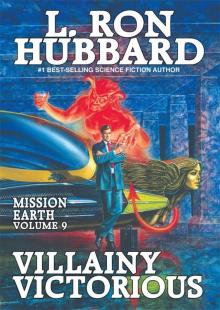 Villainy Victorious
Villainy Victorious Spy Killer
Spy Killer Ai! Pedrito!: When Intelligence Goes Wrong
Ai! Pedrito!: When Intelligence Goes Wrong The Dangerous Dimension
The Dangerous Dimension Mission Earth Volume 1: The Invaders Plan
Mission Earth Volume 1: The Invaders Plan The Slickers
The Slickers If I Were You
If I Were You The Doomed Planet
The Doomed Planet Writers of the Future Volume 31
Writers of the Future Volume 31 Mission Earth Volume 2: Black Genesis
Mission Earth Volume 2: Black Genesis Writers of the Future: 29
Writers of the Future: 29 Death Quest
Death Quest The Enemy Within
The Enemy Within Orders Is Orders
Orders Is Orders Hell's Legionnaire
Hell's Legionnaire L. Ron Hubbard Presents Writers of the Future 34
L. Ron Hubbard Presents Writers of the Future 34 The Scifi & Fantasy Collection
The Scifi & Fantasy Collection Dead Men Kill
Dead Men Kill Ole Doc Methuselah: The Intergalactic Adventures of the Soldier of Light
Ole Doc Methuselah: The Intergalactic Adventures of the Soldier of Light Shadows From Boot Hill
Shadows From Boot Hill Hurricane
Hurricane Mission Earth Volume 3: The Enemy Within
Mission Earth Volume 3: The Enemy Within Slaves of Sleep & the Masters of Sleep
Slaves of Sleep & the Masters of Sleep One Was Stubborn
One Was Stubborn Final Blackout: A Futuristic War Novel
Final Blackout: A Futuristic War Novel Devil's Manhunt
Devil's Manhunt A Matter of Matter
A Matter of Matter Voyage of Vengeance
Voyage of Vengeance If I Were You (Science Fiction & Fantasy Short Stories Collection)
If I Were You (Science Fiction & Fantasy Short Stories Collection) L. Ron Hubbard Presents Writers of the Future Volume 35
L. Ron Hubbard Presents Writers of the Future Volume 35 Mission Earth Volume 4: An Alien Affair
Mission Earth Volume 4: An Alien Affair Black Genesis
Black Genesis Tinhorn's Daughter
Tinhorn's Daughter Trouble on His Wings
Trouble on His Wings Writers of the Future Volume 27: The Best New Science Fiction and Fantasy of the Year
Writers of the Future Volume 27: The Best New Science Fiction and Fantasy of the Year Writers of the Future Volume 28: The Best New Science Fiction and Fantasy of the Year
Writers of the Future Volume 28: The Best New Science Fiction and Fantasy of the Year An Alien Affair
An Alien Affair Cargo of Coffins
Cargo of Coffins Mission Earth Volume 5: Fortune of Fear
Mission Earth Volume 5: Fortune of Fear Writers of the Future 32 Science Fiction & Fantasy Anthology
Writers of the Future 32 Science Fiction & Fantasy Anthology The Baron of Coyote River
The Baron of Coyote River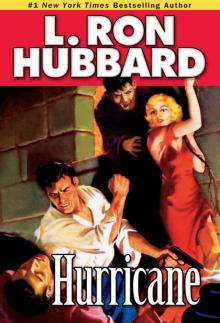 Hurricane (Stories From the Golden Age)
Hurricane (Stories From the Golden Age)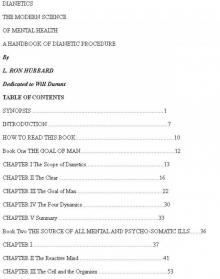 Dianetics: The Modern Science of Mental Health
Dianetics: The Modern Science of Mental Health Writers of the Future, Volume 30
Writers of the Future, Volume 30 Battlefield Earth: A Saga of the Year 3000
Battlefield Earth: A Saga of the Year 3000 Fear
Fear Disaster
Disaster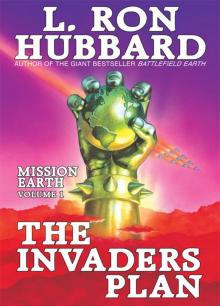 Invaders Plan, The: Mission Earth Volume 1
Invaders Plan, The: Mission Earth Volume 1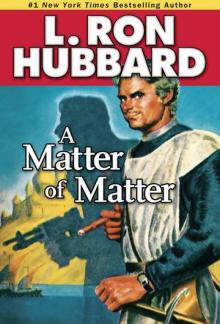 A Matter of Matter (Stories from the Golden Age)
A Matter of Matter (Stories from the Golden Age)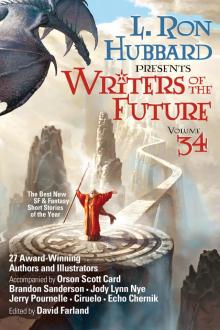 Writers of the Future Volume 34
Writers of the Future Volume 34 Death Waits at Sundown
Death Waits at Sundown One Was Stubbron
One Was Stubbron If I Were You (Stories from the Golden Age)
If I Were You (Stories from the Golden Age) Writers of the Future 32 Science Fiction & Fantasy Anthology (L. Ron Hubbard Presents Writers of the Future)
Writers of the Future 32 Science Fiction & Fantasy Anthology (L. Ron Hubbard Presents Writers of the Future) Writers of the Future, Volume 29
Writers of the Future, Volume 29 Mission Earth Volume 8: Disaster
Mission Earth Volume 8: Disaster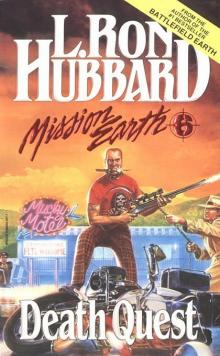 Mission Earth 6: Death Quest
Mission Earth 6: Death Quest Writers of the Future, Volume 27
Writers of the Future, Volume 27 Mission Earth Volume 7: Voyage of Vengeance
Mission Earth Volume 7: Voyage of Vengeance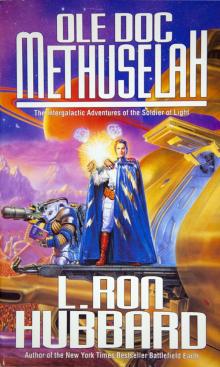 Ole Doc Methuselah
Ole Doc Methuselah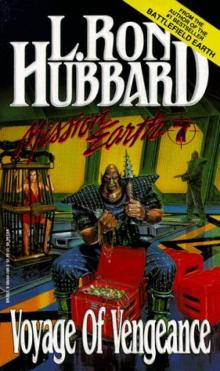 Mission Earth 07: Voyage of Vengeance
Mission Earth 07: Voyage of Vengeance Battlefield Earth
Battlefield Earth Fortune of Fear
Fortune of Fear Mission Earth 8: Disaster
Mission Earth 8: Disaster Mission Earth Volume 10: The Doomed Planet
Mission Earth Volume 10: The Doomed Planet Writers of the Future, Volume 28
Writers of the Future, Volume 28 Mission Earth Volume 6: Death Quest
Mission Earth Volume 6: Death Quest Dead Men Kill (Stories from the Golden Age)
Dead Men Kill (Stories from the Golden Age) Mission Earth 4: An Alien Affair
Mission Earth 4: An Alien Affair Spy Killer (Stories from the Golden Age)
Spy Killer (Stories from the Golden Age) Mission Earth Volume 9: Villainy Victorious
Mission Earth Volume 9: Villainy Victorious L. Ron Hubbard Presents Writers of the Future, Volume 33
L. Ron Hubbard Presents Writers of the Future, Volume 33